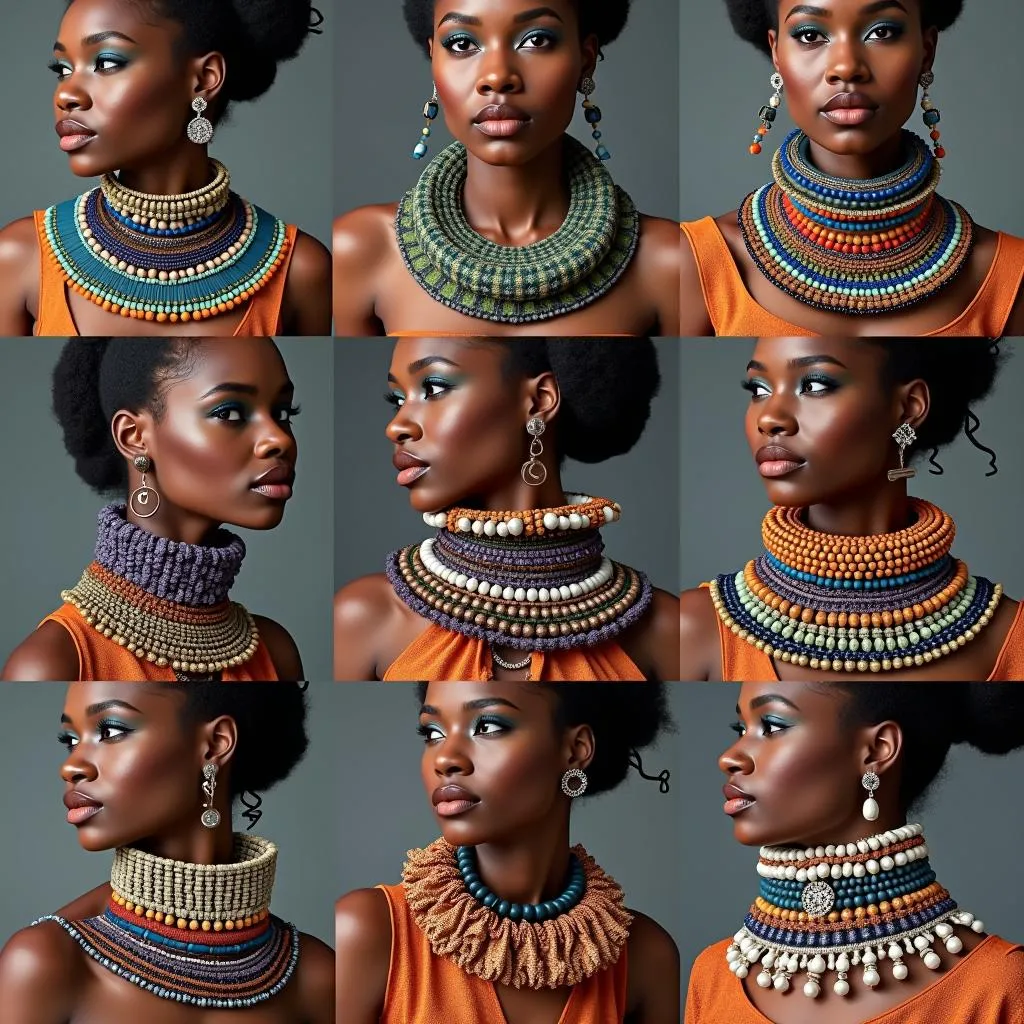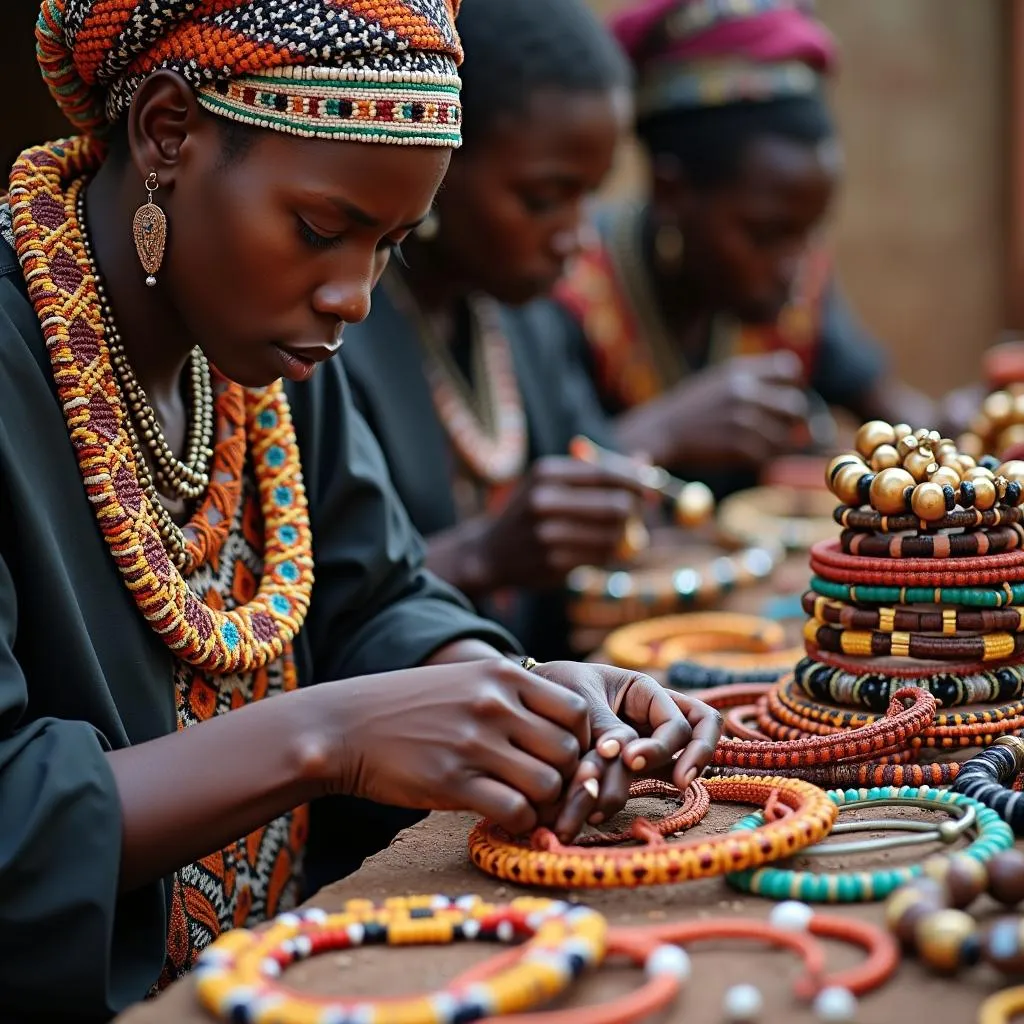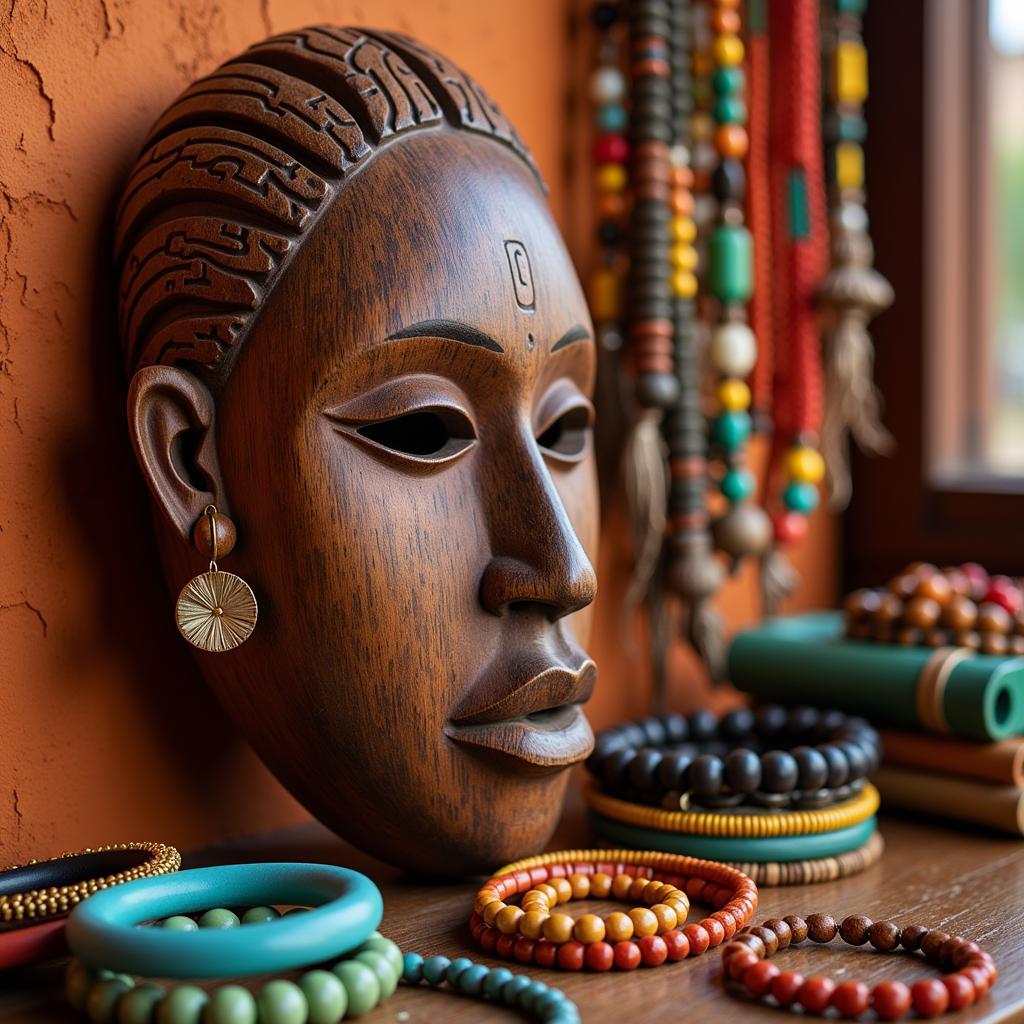The Colorful World of African Beads: A Visual Guide to Cultural Significance and Artistic Expression
African beads are more than just decorative elements; they are a rich tapestry of cultural significance, artistic expression, and historical narratives. From ancient times to modern day, beads have played a pivotal role in African Life, adorning individuals, symbolizing social status, and embodying deep cultural beliefs. In this visual guide, we embark on a journey to explore the captivating world of African beads, showcasing their diverse forms, vibrant colors, and profound meaning.
A History of Beads in Africa
The origins of bead making in Africa date back thousands of years, with evidence suggesting that early communities utilized natural materials like shells, seeds, and stones to create adornments. Over time, bead-making techniques evolved, incorporating metals, glass, and other materials. This process of innovation and adaptation mirrored the dynamic cultural landscape of the continent.
A Look at the Past:
“Beads tell the stories of our ancestors, their traditions, and their journeys,” – Dr. Amani Karanja, Anthropologist and Bead Expert
The ancient Egyptians were renowned for their intricate beadwork, using precious metals and stones to create necklaces, bracelets, and amulets. These beaded adornments were often associated with royalty, signifying power and status.
The Rise of Trade and Innovation:
The trans-Saharan trade routes brought new materials and techniques to Africa, leading to the development of vibrant glass beads. From the 15th century onwards, European traders introduced glass beads, which quickly gained popularity for their affordability and diverse colors.
Beads in Modern African Culture
Today, African beads continue to thrive as a powerful form of cultural expression. They adorn traditional garments, signify personal identity, and are incorporated into contemporary art and fashion.
Beads as a Language of Expression
Beyond their decorative value, African beads serve as a unique language of expression. Each bead can carry a specific meaning, conveying messages about social status, clan identity, and personal beliefs.
Key Types of Beads:
- Trade Beads: These beads, often made of glass, were introduced during the trans-Saharan trade routes and hold cultural significance in many African communities.
- Metal Beads: Beads made from copper, bronze, or silver are often associated with wealth and power, reflecting traditional craftsmanship.
- Seed Beads: Using natural seeds like Job’s Tears and cowrie shells, seed beads are often used for ceremonial purposes and represent nature’s abundance.
- Glass Beads: These beads are highly prized for their vibrant colors and versatility, often crafted into intricate patterns and designs.
Meaning and Symbolism:
- Colors: Different colors hold specific meanings across various African cultures. For example, red often represents strength and vitality, while blue symbolizes peace and harmony.
- Patterns: Beads are often arranged in specific patterns that convey messages or represent particular clans or lineages.
- Shapes: Beads come in a variety of shapes, each holding a unique meaning. For example, round beads often represent the circle of life, while square beads signify stability and balance.
The Artistic Legacy of African Beads
African beads are woven into the fabric of artistic expression, captivating the world with their beauty, intricate craftsmanship, and rich cultural narratives.
Beadwork in Traditional Art:
- Masks: Beads adorn ceremonial masks, amplifying their symbolic power and enhancing their visual impact.
- Jewelry: Necklaces, bracelets, and earrings are often embellished with beads, creating stunning pieces that showcase both tradition and innovation.
- Clothing: Beads are woven into traditional clothing, adding intricate detail and color to garments that reflect cultural identity.
Contemporary Bead Art:
Today, African artists are pushing the boundaries of bead art, creating contemporary works that challenge traditional conventions and explore new interpretations of cultural themes.
 African Bead Jewelry: A Woman's Symbol of Identity
African Bead Jewelry: A Woman's Symbol of Identity
Exploring the World of African Beads
Where to Find African Beads:
- Local Markets: Many African markets are treasure troves of colorful beads, offering a glimpse into traditional craftmanship.
- Online Retailers: Online marketplaces provide a wide variety of African beads, offering a convenient way to explore and purchase unique pieces.
Collecting African Beads:
For collectors, African beads offer a fascinating journey into the continent’s cultural heritage. Each bead holds a story, a connection to the past, and a reflection of African creativity.
Tips for Collecting:
- Research: Learn about the different types of beads, their cultural significance, and their historical context.
- Quality: Look for beads that are well-made and durable, ensuring they stand the test of time.
- Authenticity: Ensure the beads you purchase are authentic and represent genuine African craftsmanship.
 African Beadmakers: Craftsmanship and Tradition
African Beadmakers: Craftsmanship and Tradition
Conclusion
African beads are a testament to the continent’s vibrant culture, artistic ingenuity, and enduring spirit. From ancient times to modern day, these small, colorful objects continue to captivate and inspire, showcasing the enduring power of cultural heritage and the beauty of human creativity.
FAQ
1. What are the most common materials used for African beads?
Common materials include glass, metal, shells, seeds, and wood.
2. How do beads signify social status in African cultures?
Beads can indicate wealth, lineage, or position within a community, often reflecting the wearer’s social standing.
3. What are some popular bead patterns found in Africa?
Geometric patterns, animal motifs, and symbolic representations of nature are common in African beadwork.
4. Where can I learn more about African beadmaking?
You can find information through online resources, cultural centers, and beadmaking workshops.
5. Are African beads only used for traditional purposes?
No, contemporary African artists are incorporating beads into modern art, fashion, and jewelry designs.

